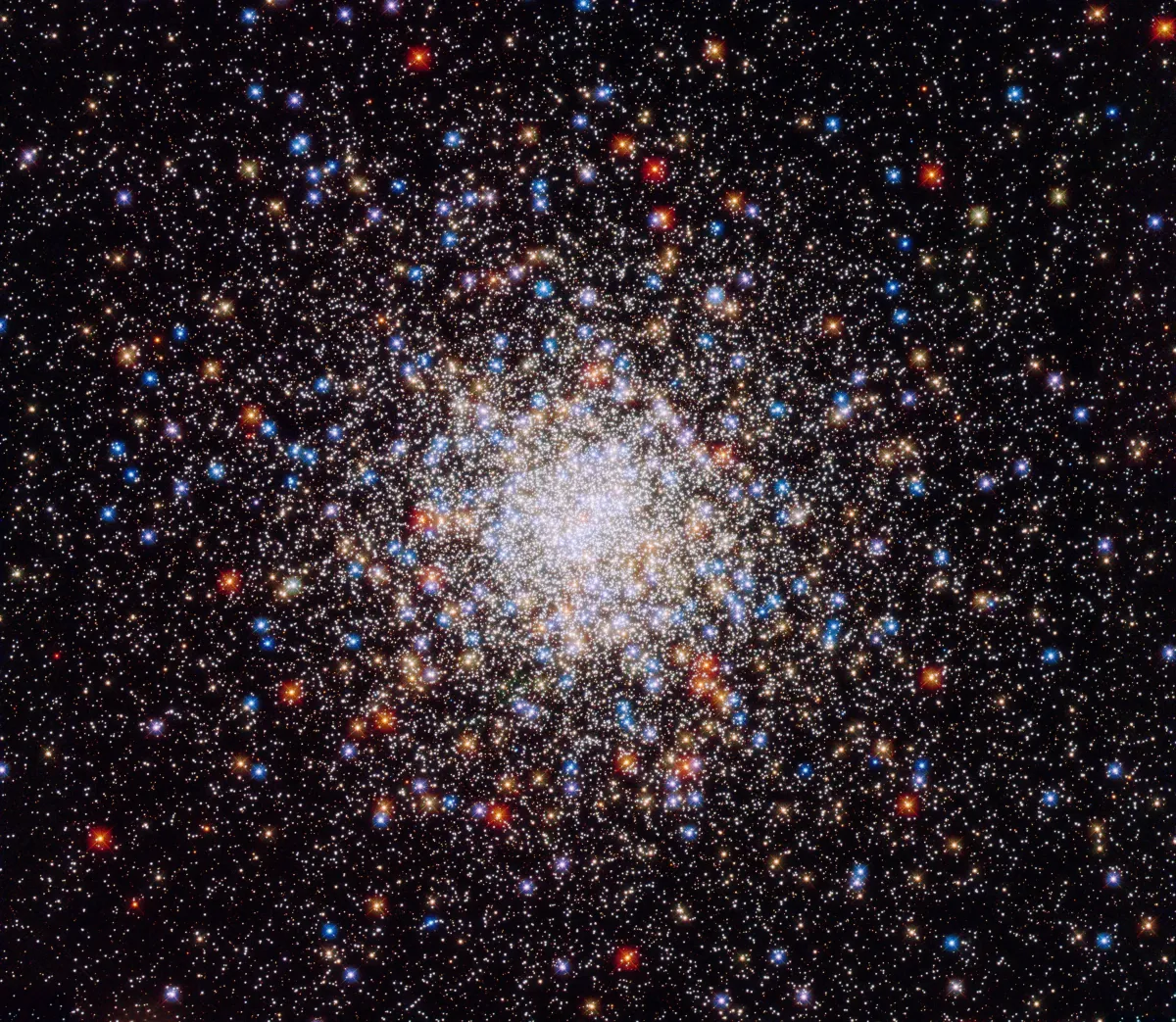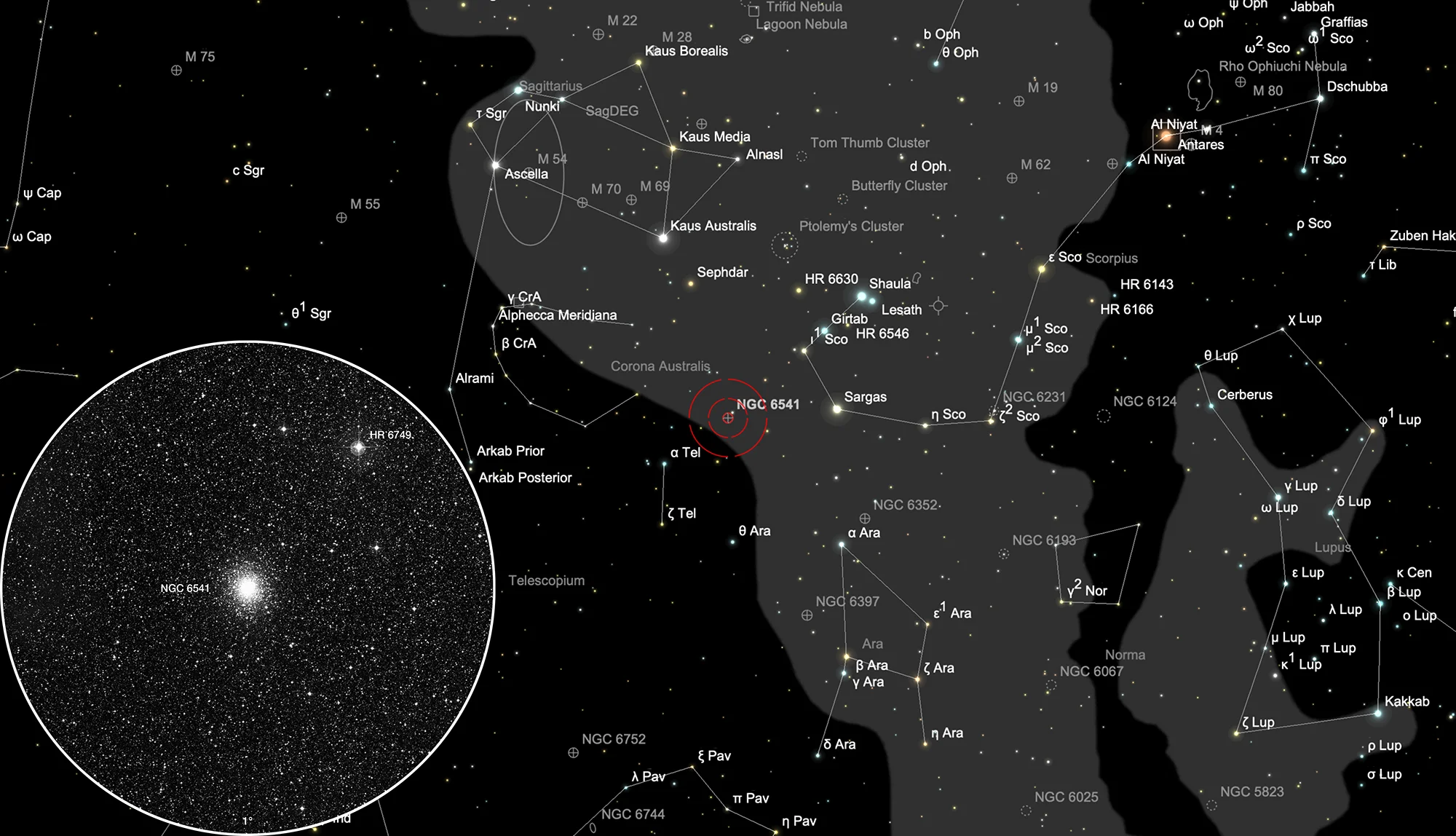Globular Cluster NGC 6541

History
On 19 March 1826 Niccolò Cacciatore, an Italian astronomer and assistant to Giuseppe Piazzi, discovered the globular cluster NGC 6541 in Corona Australis while searching for Comet C/1825 N1 (Pons) using a small refractor at Palermo Observatory. [364]
Scottish astronomer James Dunlop independently discovered the globular a few months later on 2 June 1826. He made five observations with his self-built 9" reflector, listed the cluster as Δ 473 and described it as «a very bright round highly condensed nebula, about 3' diameter. I can resolve a considerable portion round the margin, but the compression is so great near the centre, that it would require a very high power, as well as light, to separate the stars; the stars are rather dusky.» [50]
John Herschel's first observed the cluster on 1 June 1834 during his sky survey from South Africa. He made two observations, listed the cluster as h 3726 and noted: «Globular, bright, round, extremely compressed, very fFine; diameter of most comp part = 11 seconds of time in RA; stars 15..16m. The scattered stars extend to three times the diameter and die away very gradually.» [11]
Physical Properties
| Designation | NGC 6541 |
| Type | GCL (III) |
| Right Ascension (J2000.0) | 18h 08m 02.2s |
| Declination (J2000.0) | -43° 42' 40" |
| Diameter | 15 arcmin |
| Visual magnitude | 6.3 mag |
| Metric Distance | 7.500 kpc |
| Dreyer Description | globular, B, R, eC, gbM, rrr, st 15…16 |
| Identification, Remarks | h 3726; GC 4372; GCL 86; ESO 280-SC4 |
Finder Chart
The globular cluster NGC 6541 is located in the constellation Corona Australis. Unfortunately it is not visible from Europe. On 24 June it in opposition with the Sun and is therefore highest in the sky at local midnight.
